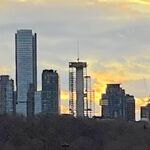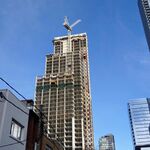Rainforest
Senior Member
None of these projects were contemplating additional lanes so far as I know; they were contemplating repurposing within the existing curb to curb portion of the row.
If anyone knows different, I will duly stand corrected.
* to further clarify, level boarding platforms would still involve widening into the boulevards where they are built.
Then it should be doable, but not sure it will give much speed improvement compared to just running mixed-traffic express buses.
Yonge Street (Finch to Steeles) has curbside bus lanes. Yet the express buses (53E, 60E) and VIVA buses often prefer to run in the mixed traffic lanes, to pass local buses stopped at the curbside.




